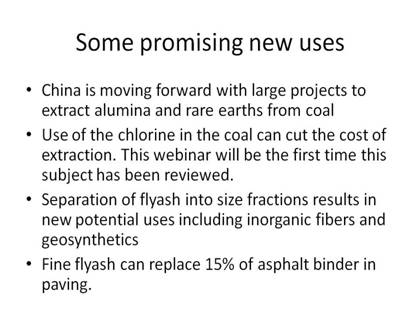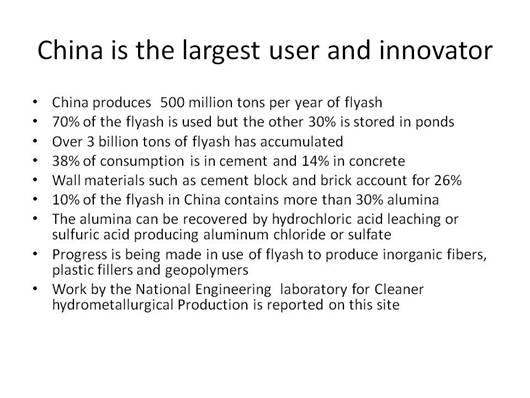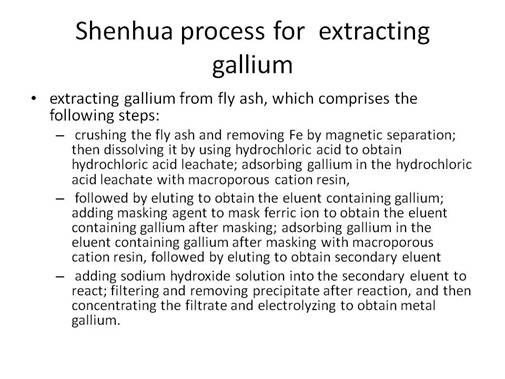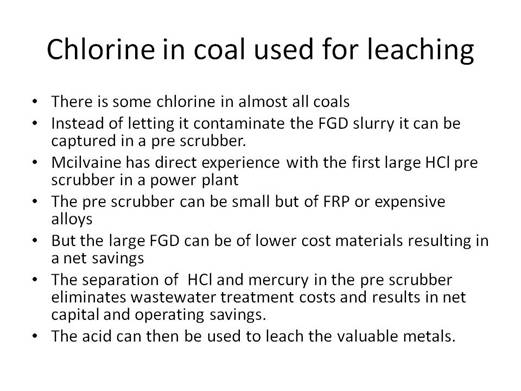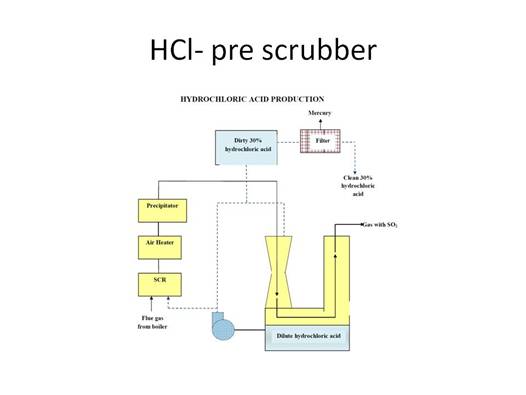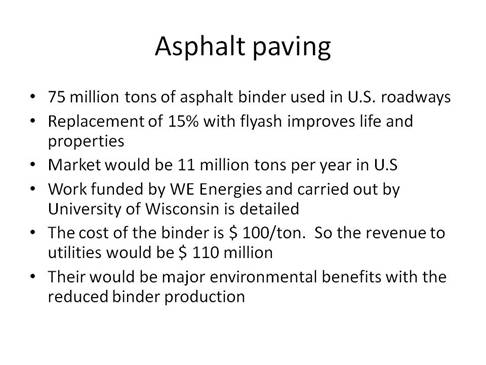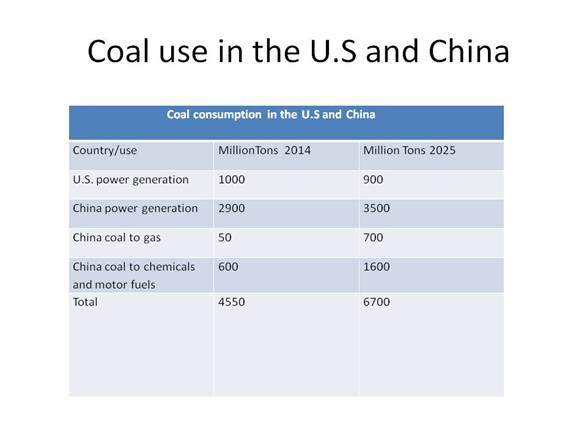
The Hot Topic for June 26 was “CCR $ Billions Needed”
Douglas J. Dahlberg,
Project Associate, Civil Support Services
Sargent & Lundy LLC,
listed questions being asked by clients and then focused on several of the most
important (in red).
CCR Issues
What will the per yard/ton costs likely be at an EPA proposed rule compliant
disposal site?
1. What's the difference if we haul directly to an existing municipal waste landfill?
2. How expensive is it to close a site in place with an EPA required ash disposal site cover/cap?
3. Estimate the cost of removal of ash from a noncompliant pond or dry fill.
4. Should I close in place and cap my disposal site or excavate ash?
5. What are the critical issues that help decide if I should close in place or excavate ash?
6.
If
groundwater contamination is discovered, what are the most likely
requirements/outcome?
7. Since our existing disposal site is “grandfathered” in under a state permit, how will the new rule affect us?
8. How can I best bring my site into compliance with the new rules?
9. If the existing state regulations differ from EPA's new rule, what will likely be the outcome?
10.
What are the issues with
the seismic requirements?
Coal Ash and CCR Issues and Standards Webinar - Hot Topic Hour October 3, 2013
Revision
Date: 10/3/2013
Douglas anticipates a final rule to classify CCRs under Subtitle D, Resource Conservation and Recovery Act (RCRA), similar to Municipal Waste.
Revision Date: 10/3/2013
Doug discussed how the proposed U.S. EPA coal combustion residuals regulations will impact the power plant and the bottom line.
Revision Date: 5/3/2012
Mark Rokoff,
National Practice Lead for CCR's, URS
Corporation provided an overview of CCR regulations and pointed out all
the collateral impacts. He pointed out that the change in the timing for the
Effluent regulation will mean that the CCR decisions will be made first. He
warned that a myopic solution such as closing ponds without regard to the more
holistic water and solids problems would be be a mistake.
Greatest Challenges to Effective CCR Management
You need to understand and evaluate risks and develop plans to address differences between state and proposed federal regulation and evaluate all the alternatives.
Revision Date: 6/25/2014
Groundwater Evaluation for Ash Ponds at a Coal Fired Power Plant in Texas
This paper discusses a response strategy employed to address regulatory agency concerns regarding possible leakage form ash ponds. Wells at the facility have been sampled semiannually for a number of years for a comprehensive list of metals and other general water quality parameters.
Revision Date: 6/23/2014
Overview of CCR Regulations and Changes in Disposal Management
Meeting the CCR regulations will require careful planning. It is much more than just pond closures.
Revision Date: 6/20/2014
Control and Treatment Technology for FGD Wastewater Webinar - Hot Topic Hour August 15, 2013
There are State rules in place which are requiring significant investment in treatment.
Revision Date: 8/15/2013
Gordon discussed the non thermal ZLD process. This process would seem to be ideal in conjunction with the hot catalytic filter with DSI and is therefore being displayed on the hot gas filter website.
Revision Date: 8/15/2013
Dale Timmons,
R.G.,
Business Development Program Manager
NAES Corporation cited the advantages of dense phase slurry to meet the
CCR regulations. They include the encapsulation of the metals and a solid waste
landfill which can be constructed in a continuous vertical manner. Doug Dahlberg
commented that this was an advantage.
Revision Date: 10/3/2013
Dale discussed the Circumix Dense Slurry System (DSS) technology.
Revision Date: 10/3/2013
Bill Betke
of GSE discussed a proposed
North Carolina CCR bill. North Carolina Senate Bill 729 [Edition 2] “Coal Ash
Management Act of 2014” was sponsored by two Republicans and is less stringent
and more likely to be enacted than one sponsored by Democrats. But even this
more lenient rule would have a shorter time frame than the Federal proposed rule
and would in some cases be more stringent. There is a proviso that where any
Federal statute is more stringent it would apply.
Highlights
1.
Places CCRSI under regulation by DENR, including:
a.
Already dry CCRSI
b.
Wet CCRSI
c.
Associated ponds
d.
Inactive CCRSI already covered with soil
2.
Places large-scale structural fills under regulation by DENR
a.
Temporary moratorium until August 15, 2015
b.
Permit process
c.
Composite bottom liners
d.
Composite caps
3.
Prioritizes CCRSI for closure
a.
High-risk
b.
Intermediate-risk
c.
Low-risk
4.
Mandates Method of Closure for CCRSI
a.
For High and Intermediate-risk
i.
Dewater
ii.
Convert CCRSI to properly-lined dry landfill; 300-foot buffer streams/rivers
iii.
Remove CCR, transfer to beneficial re-use/structural fill and/or lined landfill,
remediate property, corrective action for groundwater.
b.
For Low-risk – implement legacy closure plan
|
DATE – ON OR BEFORE |
|
|
July 1, 2014 |
Construction of new/expansion of existing CCRSI prohibited |
|
October 1, 2014 |
Use of existing CCRSI at retired coal-fired plants prohibited |
|
August 1, 2015 |
Moratorium on construction of dry landfills “piggybacked” on old CCRSI
ends |
|
December 31, 2018 |
Active coal-fired plants must be converted to dry fly ash or retired |
|
August 1, 2019 |
CCRSI at four named power plants must be closed |
|
December 31, 2019 |
·
Active coal-fired plants must be converted to dry bottom ash or retired
·
High-risk CCRSI must be closed |
|
December 31, 2024 |
Intermediate-risk CCRSI must be closed |
|
December 31, 2029 |
Low-risk CCRSI must be closed |
Bill also referenced the considerable information which has been posted on the
CCR and Effluent website. Here are the links
While the use of geosynthetic geomembranes in coal ash landfills and ponds has
been shown to provide superior protection compared to not using a liner, there
is still significant risk of leakage when a geomembrane is installed without
additional geosynthetic products, such as geosynthetic clay liners.
Revision Date: 6/25/2014
After the client requested an evaluation of drainage layer alternatives of their
proposed landfill liner, AMEC proposed a geocomposite prototype specially
designed for use with Coal Combustion products (CCPs).
Revision Date: 6/25/2014
Coal Ash Storage Facility- A 30 Year
Forensic Study
Replacement of old lining system offers an opportunity to study the performance
of geosynthetic lining containment materials.
Revision Date: 6/25/2014
A Drainage Geocomposite for Coal
Combustion Residual Landfills and Surface Impoundments
The layered geotextile presented in this paper was developed for lamination with
a geonet to form an acceptable drainage geocomposite for CCRs. Having a fuzzy
surface with a woven filter makes it possible to laminate the geotextectile to a
geonet while minimizing intrusion into the drainage core.
Revision Date: 6/25/2014
Bob McIlvaine provided the following overview of byproducts.

